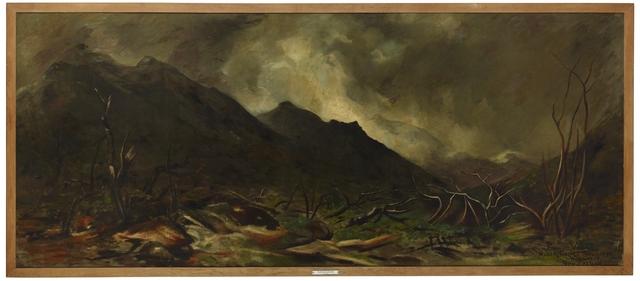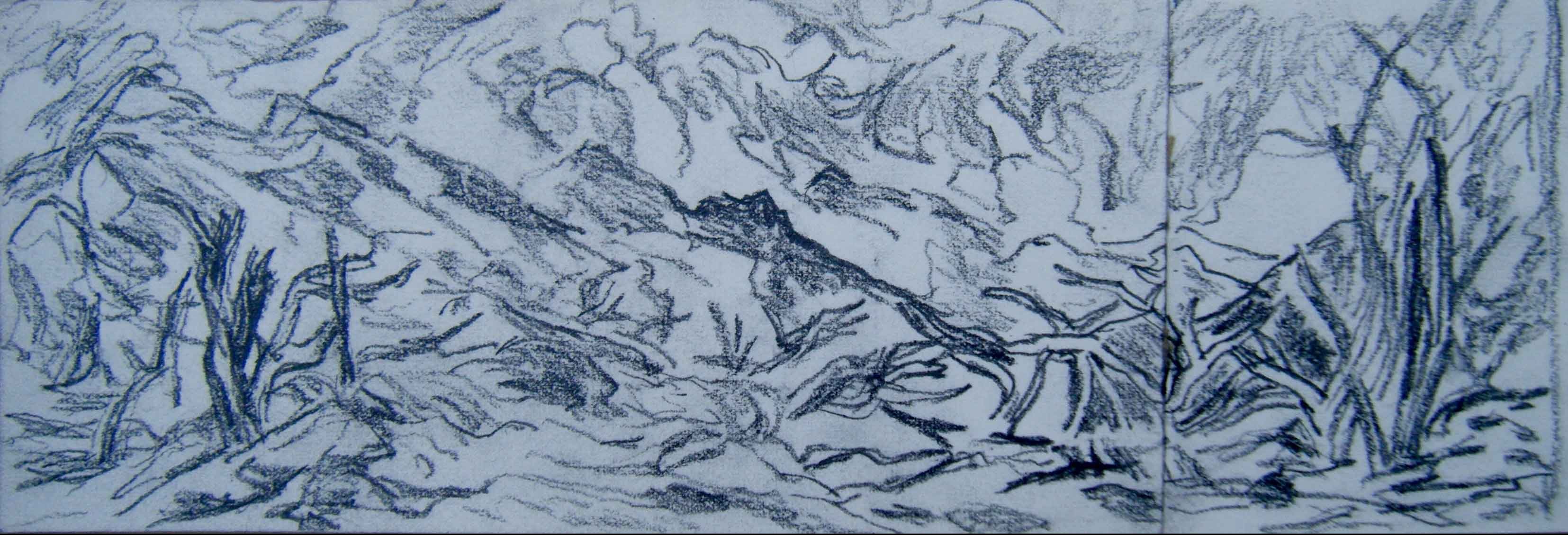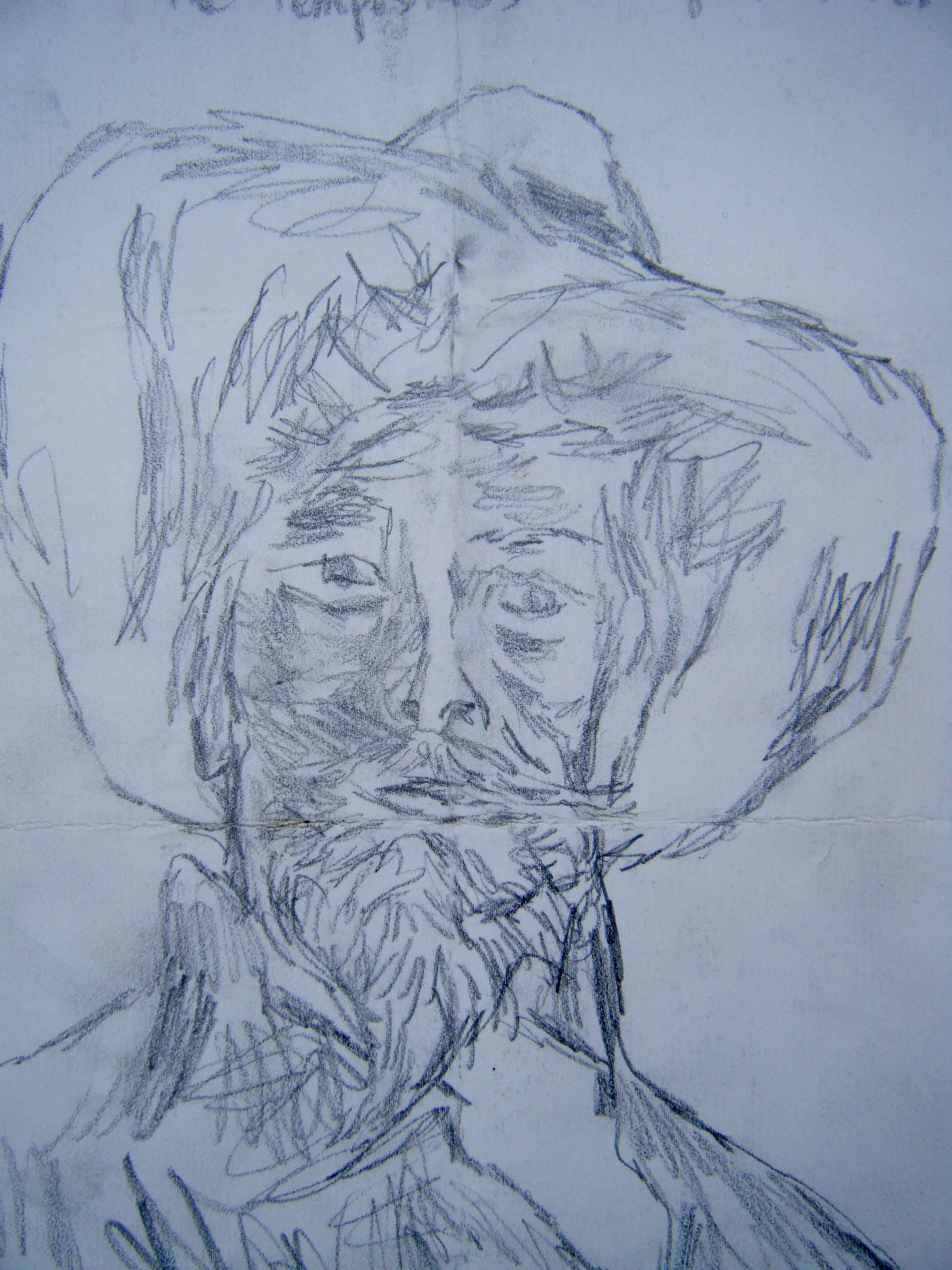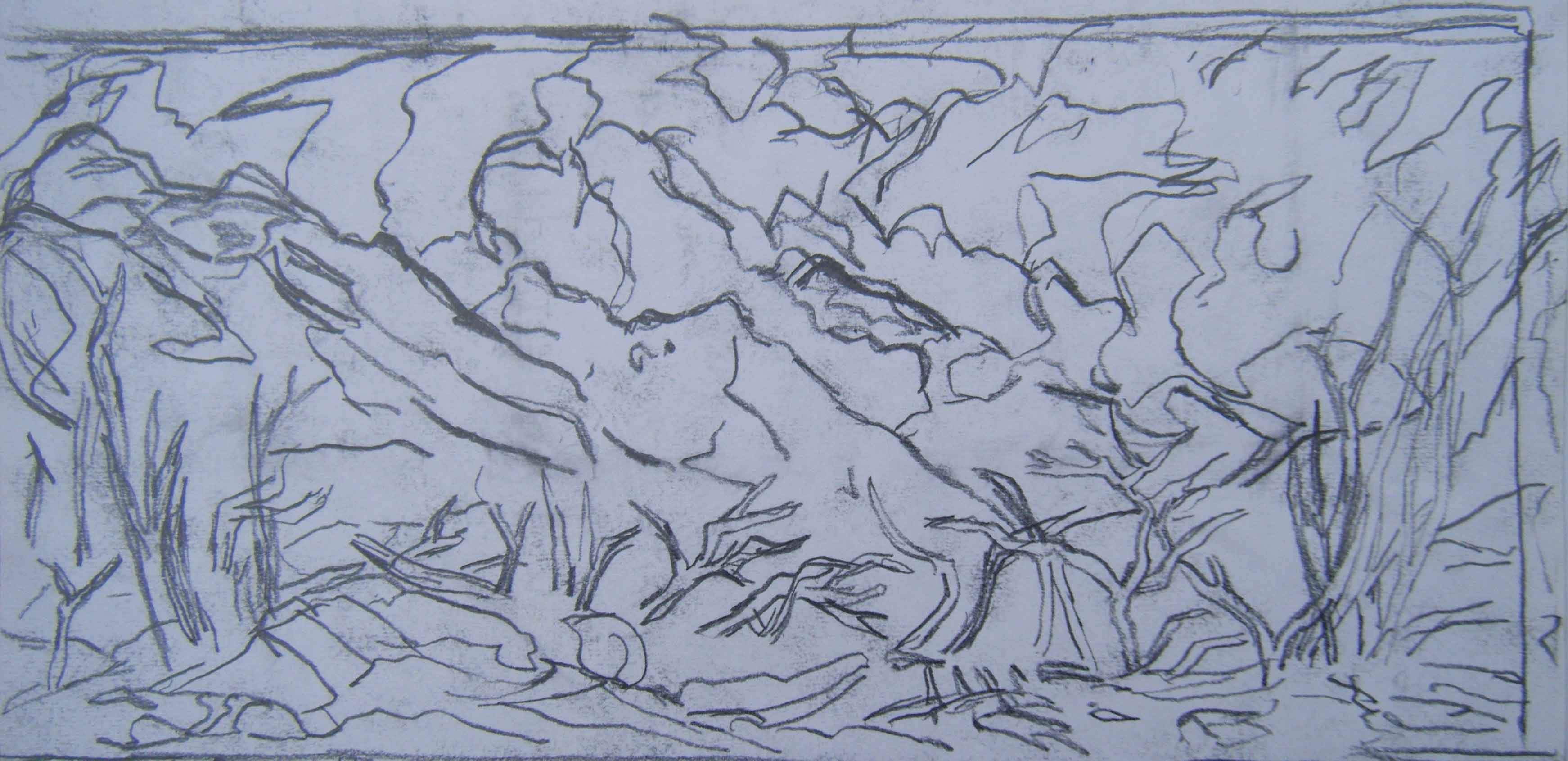In February 2011 the Christchurch Public Art Gallery held an exhibition of paintings by Petrus van der Velden. In a room full of rivers there was a long brooding painting that caught my attention. I became obsessed with it, visiting it every day until the earthquake of the 22nd. I thought of it as van der Velden’s masterpiece and made many drawings and notes from it. I include a few of my sketches here.
A painter only paints one masterpiece in his lifetime. Gauguin painted Where do we come from? What are we? Where are we going? Picasso painted Guernica. Petrus van der Velden painted Mount Rolleston, Otira Gorge, West Coast, New Zealand.
All of his previous years of painting from nature were put to use in this panoramic distillation. Dead trees reach up from a river to mountains which are in turn engulfed by cloud. Through and beyond the mountain range glows a fire started by Goya. I am thinking of one of his Black Paintings – where two men are incessantly clubbing each other in a sulphurous light.
Naked branches rattle a dance across the foreground of the painting. They also leap from the 19th century into the 20th blazing with the fury of Vlaminck. The atmosphere is electric. Light is issuing forth and the sky is cascading.
The Painter
In 1911 Petrus van der Velden sat in the quiet of his Wellington studio. He was alone with his memories. He had two years left to live. He was busy recreating Otira, a landscape he had painted repeatedly in the 1890’s.
Van der Velden painted what he saw. He was like a journalist in his early Dutch work, recording funeral barges in the mist and snow. He worked in series. Each painting is like a still from a vast film.
Mount Rolleston, Otira is a symphony of browns, amazingly alive and ever variable. If this guy had lived another 100 years, imagine what he would have done. He talked about “the expression of the moment” and “an expression of your own feelings”. His work is characterised by great slashes of brushstrokes and expanses of paint.
His brushstrokes have the coherence of spontaneity or something even more wilful. His paint makes things self evident as soon as they spring from his brush. The motion of his hand reflects the motion of water sculpted in paint. Lines take flight.
Seeing the nakedness of the thing, his lines waver but have to stay on track.
He painted this work in his studio from the cave of his memory. Reality is compressed. Imagine the four sides of the painting as walls. In this enclosure mountains have gravity. Branches work their way into the air making graphic ideograms. Only the will of the painter allied to unrelenting nature brings the work out of chaos.
The Painting
The landscape rises up abruptly. We are already in the foreground. We are in the painting. We are in a world of russet patches with touches of pounamu and shades of brown. There is some humour in a rock shaped like exposed buttocks. Light falls to the very edge. It looks like the last of it on a short winter’s day. The sun is going down. This is the culmination of the end of the day. The painting is an eternal farewell.
Trees stand like accusations. A blasted tree stands like a memory in the tilt of land. A torn branch is red at the extremity.
Empty churches of branches are kept linear. Branches end in fingers from skinny, wiry arms. The trees are a coda in space, bending and lifting. They are nature’s memory. There is a desperate proneness about them rising from decay and are not far from joining it.
The zig-zag of rock echoes branches. The land is darker than the sky. Sometimes a shift takes place. Land becomes cloud. Sky becomes cloud. A dark crevice of rock becomes the edge of the skull of earth. Trunks slip through branches. Mountains fall into the right hand side. Mist rises above his signature. He signs the painting in gothic script: “P van der Velden Mount Rolleston, Otira Gorge West Coast New Zealand.”
It is an austere painting. A line will do for a trunk. Water goes through branches, which go through light.
The eye traverses great distances while looking at the painting. A thundery procession of light shows what is known and how far you can go. The whole proportion of the painting is shaped like a journey with its long stretch. One form melds into another. The wavelike motion of the sky catches a bluish grey empty patch in towering imagination.
The light-filled clouds roll in while dark clouds hover overhead. The river flows through broken arteries of trees. Mist is about to rise from the valley. Colour is the muscle above the bones of the mountains. The trees are all bone.
The underlying pulse of the work comes from the greenstone heart of the painting in the middle ground. It is small compared to the vast bulk of brown. It sets up a contrast of harmonies. Red rust powers against dark green in a wrestling match of colour. Shadows and light are evenly poised.
The river is strangely silent. The currents appear as great glacial movements frozen by the chisel of his brush. In earlier works, water was animated in a frenzy of tempestuous falls and eddies. Here, he slows the river down. His eyes of stone slow the waters rush to a standstill. Time stands still.
It is a landscape after a rainstorm has passed through it. It is an aftermath with the hint of a new beginning. It is the crack of thunder. It is filled with apprehension. It is a painting where something of the painter is in the fibres of the trees, the molecules of air.
Wayne Seyb 2015




